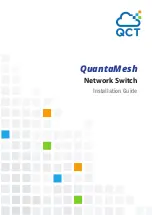
Configuring for Network Management Applications
LLDP (Link-Layer Discovery Protocol)
LLDP and CDP Data Management
This section describes points to note regarding LLDP (Link-Layer Discovery
Protocol) and CDP (Cisco Discovery Protocol) data received by the switch
from other devices. LLDP operation includes both transmitting LLDP packets
to neighbor devices and reading LLDP packets received from neighbor
devices. CDP operation is limited to reading incoming CDP packets from
neighbor devices. (ProCurve switches do not generate CDP packets.)
LLDP and CDP Neighbor Data
With both LLDP and (read-only) CDP enabled on a switch port, the port can
read both LLDP and CDP advertisements, and stores the data from both types
of advertisements in its neighbor database. (The switch only
stores
CDP data
that has a corresponding field in the LLDP neighbor database.) The neighbor
database itself can be read by either LLDP or CDP methods or by using the
show lldp
commands. Take note of the following rules and conditions:
■
If the switch receives both LLDP and CDP advertisements on the same
port from the same neighbor the switch stores this information as two
separate entries if the advertisements have differences chassis ID and port
ID information.
■
If the chassis and port ID information are the same, the switch stores this
information as a single entry. That is, LLDP data overwrites the corre
sponding CDP data in the neighbor database if the chassis and port ID
information in the LLDP and CDP advertisements received from the same
device is the same.
■
Data read from a CDP packet does not support some LLDP fields, such as
“System Descr”, “SystemCapSupported”, and “ChassisType”. For such
fields, LLDP assigns relevant default values. Also:
• The LLDP “System Descr” field maps to CDP’s “Version” and “Plat
form” fields.
• The switch assigns “ChassisType” and “PortType” fields as “local” for
both the LLDP and the CDP advertisements it receives.
• Both LLDP and CDP support the “System Capability” TLV. However,
LLDP differentiates between what a device is capable of supporting
and what it is actually supporting, and separates the two types of
information into subelements of the System Capability TLV. CDP has
only a single field for this data. Thus, when CDP System Capability
data is mapped to LLDP, the same value appears in both LLDP System
Capability fields.
•
System Name and Port Descr are not communicated by CDP, and thus
are not included in the switch’s Neighbors database.
13-54
Summary of Contents for ProCurve 2610-24
Page 1: ...Management and Configuration Guide 2610 2610 PWR ProCurve Switches R 11 XX www procurve com ...
Page 2: ......
Page 18: ...xvi ...
Page 24: ...Product Documentation xxii ...
Page 54: ...Using the Menu Interface Where To Go From Here 3 16 ...
Page 94: ...Using the Web Browser Interface Status Reporting Features 5 24 ...
Page 132: ...Switch Memory and Configuration Multiple Configuration Files 6 38 ...
Page 148: ...Interface Access and System Information System Information 7 16 ...
Page 192: ...Time Protocols SNTP Messages in the Event Log 9 24 ...
Page 256: ...Power Over Ethernet PoE Operation PoE Event Log Messages 11 18 ...
Page 280: ...Port Trunking Port Status and Configuration 12 24 ...
Page 362: ...File Transfers Copying Diagnostic Data to a Remote Host PC or Unix Workstation A 24 ...
Page 438: ...Troubleshooting Restoring a Flash Image C 48 ...
Page 446: ...MAC Address Management Viewing the MAC Addresses of Connected Devices D 8 ...
Page 450: ...Daylight Savings Time on ProCurve Switches Configuring Daylight Savings Time E 4 ...
Page 462: ...12 Index ...
Page 463: ......
















































